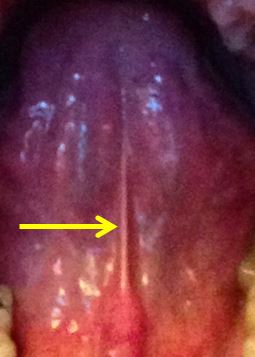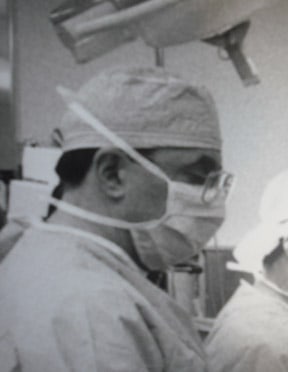A newborn in Tennessee had an operation to correct a “tongue tie.” Except for the procedure being performed on the wrong baby, things went well.
According to reports, a nurse came into the mother’s room and took the baby. The mother assumed that the child was having some routine nursing care and was understandably upset when the nurse returned and said the baby was fine after the operation.
The frenulum is a fold under the front part of the tongue [see photo of a normal frenulum].
When it is too short, tongue tie results. It can cause immediate problems with feeding and with speech and alignment of the teeth later in childhood. The surgery is usually done without anesthesia and consists of simply cutting the shortened frenulum to release the tongue.
This link from Stanford University has before and after photos of a newborn with tongue tie.
Tongue tie is common, occurring in 4% to 10% of babies, and serious complications of the corrective surgery are extremely rare.
How could this mix-up have happened?
It appears that the doctor accidentally sent for the wrong patient.
The nurse who fetched the baby either did not ask anyone why he was having a procedure and/or did not know the baby’s history very well.
Before starting any invasive procedure in most hospitals, a “timeout” is done. It consists of a checklist with the following: 1) the correct patient is confirmed by using at least two separate identifiers; 2) the procedure to be done is agreed upon by all participating medical personnel; 3) a consent form signed by the patient or a legal guardian is in the record, 4) all necessary equipment is available. I will wager that a root cause analysis will find that a proper timeout did not take place.
The pediatrician who did the operation apologized, but the family has retained a lawyer and is threatening to sue.
In order for a malpractice suit to succeed, four conditions must be met.
A doctor-patient relationship must have existed. In the tongue tie case, the doctor presumably had a relationship with the mother and the baby.
Negligence must have occurred. Operating on the wrong baby fulfills that criterion.
The negligent act must have caused the injury. So far, so good.
Significant damage must have resulted from the negligent act. One report says “Nearly 2 months have passed since the surgery, and the infant appears well enough, although he does make gagging sounds at times, while lying on his back, and other times has trouble during bottle feeding.”
I have several children and grandchildren. Every one of them had occasional gagging and difficulty feeding as a baby. Proving with medical certainty that cutting the frenulum caused these problems would be difficult.
However if I were representing the doctor or the hospital, I would try to settle this case as soon as possible. Even though the damages are probably insignificant, the negative publicity surrounding a trial would outweigh the possibility of winning the case.
One more thing. Why didn’t the doctor notice that the child about to be operated on had a normal frenulum?
Skeptical Scalpel is a retired surgeon and was a surgical department chairman and residency program director for many years. He is board-certified in general surgery and critical care and has re-certified in both several times. He blogs at SkepticalScalpel.blogspot.com and tweets as @SkepticScalpel.




 SkepticalScalpel
SkepticalScalpel